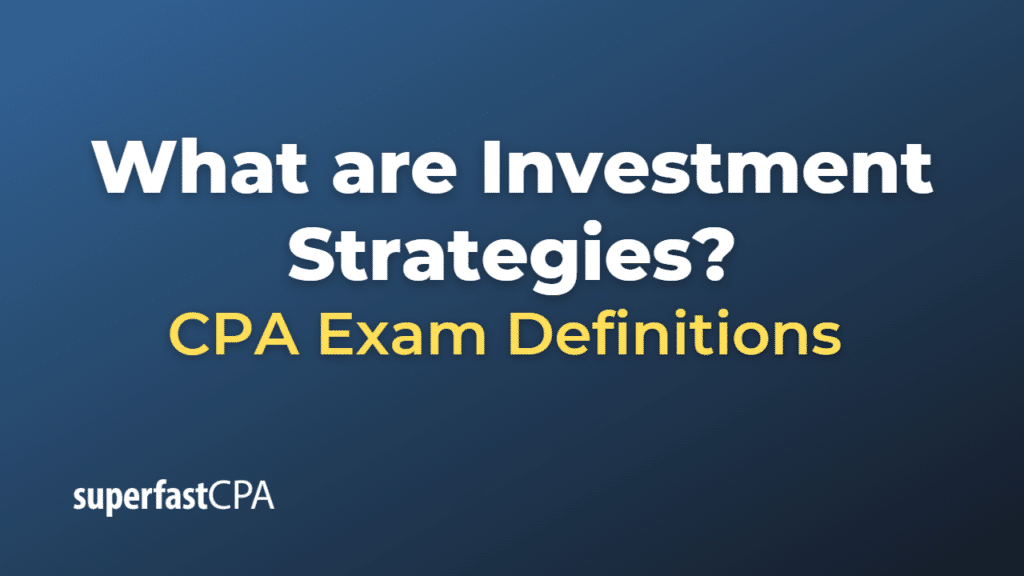Investment Strategies
Investment strategies are plans that guide an investor’s decisions based on goals, risk tolerance, and future needs for capital. They help an investor decide which assets to invest in, when to buy these assets, and when to sell them.
Here are a few common types of investment strategies:
- Buy and Hold : This strategy involves buying stocks, bonds, or other investments and holding them for a long period of time, regardless of fluctuations in the market. This strategy is based on the belief that in the long term, the market will provide a good rate of return despite periods of volatility or decline.
- Value Investing: This strategy involves buying securities that appear underpriced by some form of fundamental analysis. Value investors actively seek stocks they believe the market has undervalued.
- Growth Investing: Growth investors invest in companies that exhibit signs of above-average growth, even if the share price appears expensive in terms of metrics such as price-to-earnings or price-to-book ratios.
- Income Investing: This strategy focuses on securities that generate steady income for investors. This can be through dividends (for stocks) or interest payments (for bonds).
- Dollar-Cost Averaging: This strategy involves investing a fixed amount of money at regular intervals, regardless of the share price. Over time, this approach can reduce the impact of volatility on the overall investment.
- Diversification: This strategy involves spreading investments across various financial instruments, asset classes, or other categories to manage risk and potential for returns. The theory is that a single negative event is unlikely to affect all diverse assets in the same way.
- Asset Allocation: This strategy involves deciding the percentage of an investment portfolio to allocate to different asset classes, such as stocks, bonds, and cash equivalents.
Each of these strategies has its own set of considerations, and an investor might use a combination of these strategies depending on their investment goals, risk tolerance, investment horizon, and specific financial circumstances.
Example of Investment Strategies
Let’s consider an example of the “Buy and Hold” investment strategy:
John, a 30-year-old software engineer, has a stable income and wants to start investing for retirement. After assessing his risk tolerance and long-term goals, he decides to adopt a “Buy and Hold” investment strategy.
John starts by investing $10,000 in a diversified portfolio of stocks. His portfolio consists of shares from different industries, including technology, healthcare, consumer goods, and more. Even if the stock market experiences volatility and some of his stocks decrease in value, John does not panic and sell his investments. Instead, he continues to hold onto his stocks, believing in the long-term growth potential of these companies and the overall market.
Over the next few years, John consistently adds a portion of his salary to his investment portfolio. Despite short-term market fluctuations, he does not frequently buy and sell his stocks. Instead, he maintains his “Buy and Hold” strategy, anticipating that his investments will grow over the long term and will provide a good return by the time he retires.
Over decades, thanks to the power of compound interest and the general upward trend of the market, John’s portfolio grows significantly. By the time he retires, his investments provide a substantial nest egg that he can use to support his lifestyle in retirement.
Please note that while this is a simplified example and actual investing will involve various factors such as market risks, transaction costs, and tax considerations, it gives a general idea of how a “Buy and Hold” investment strategy might work.













